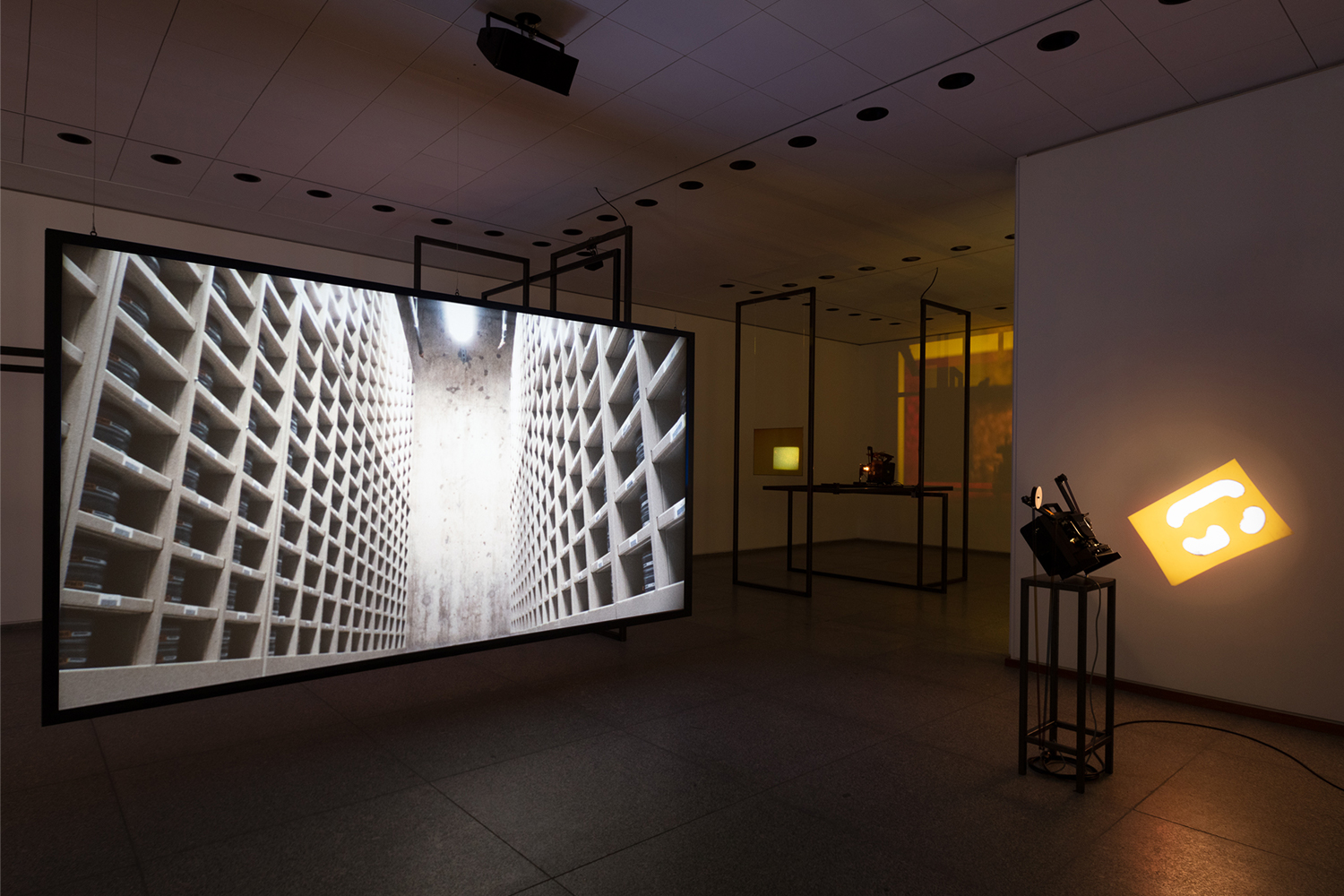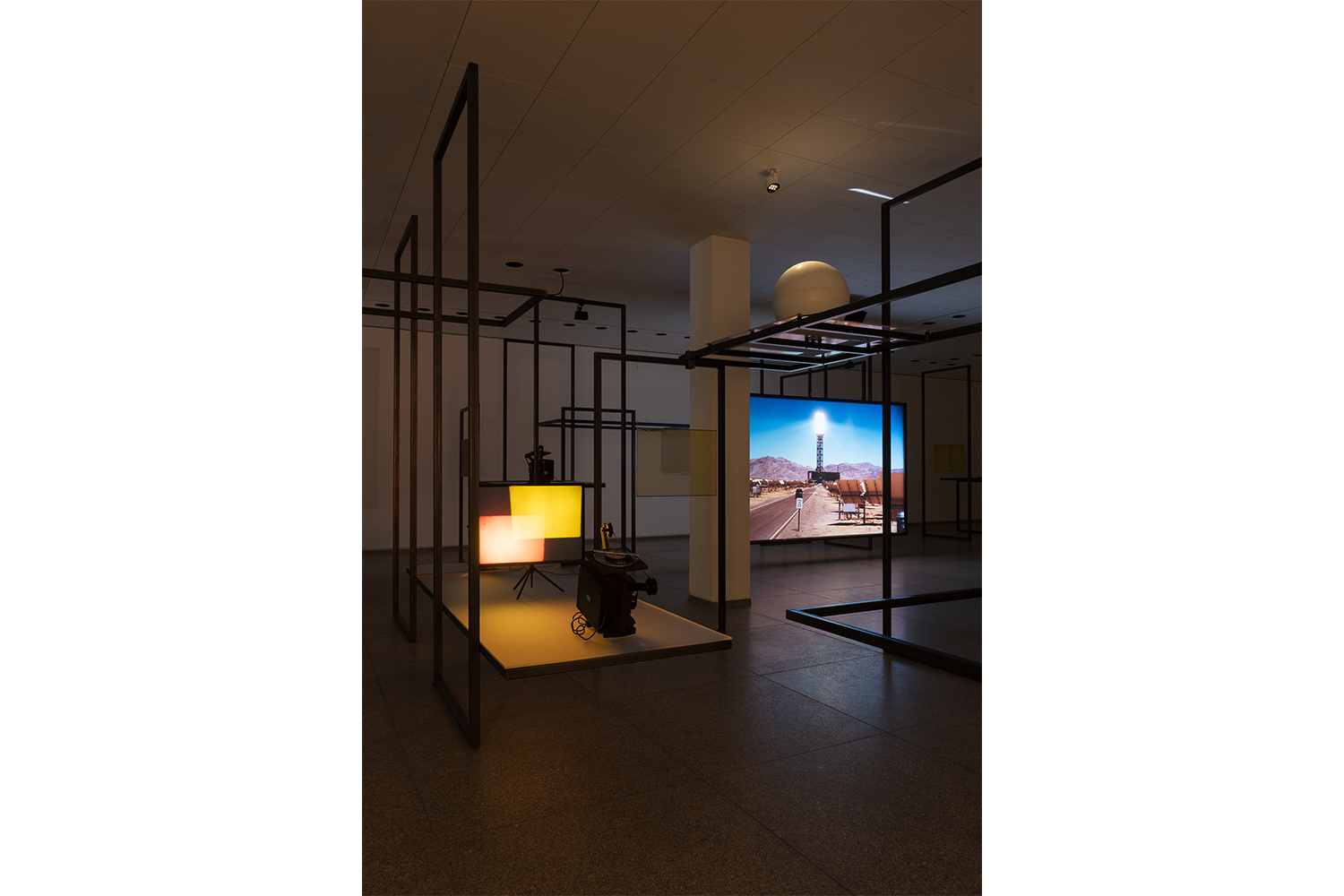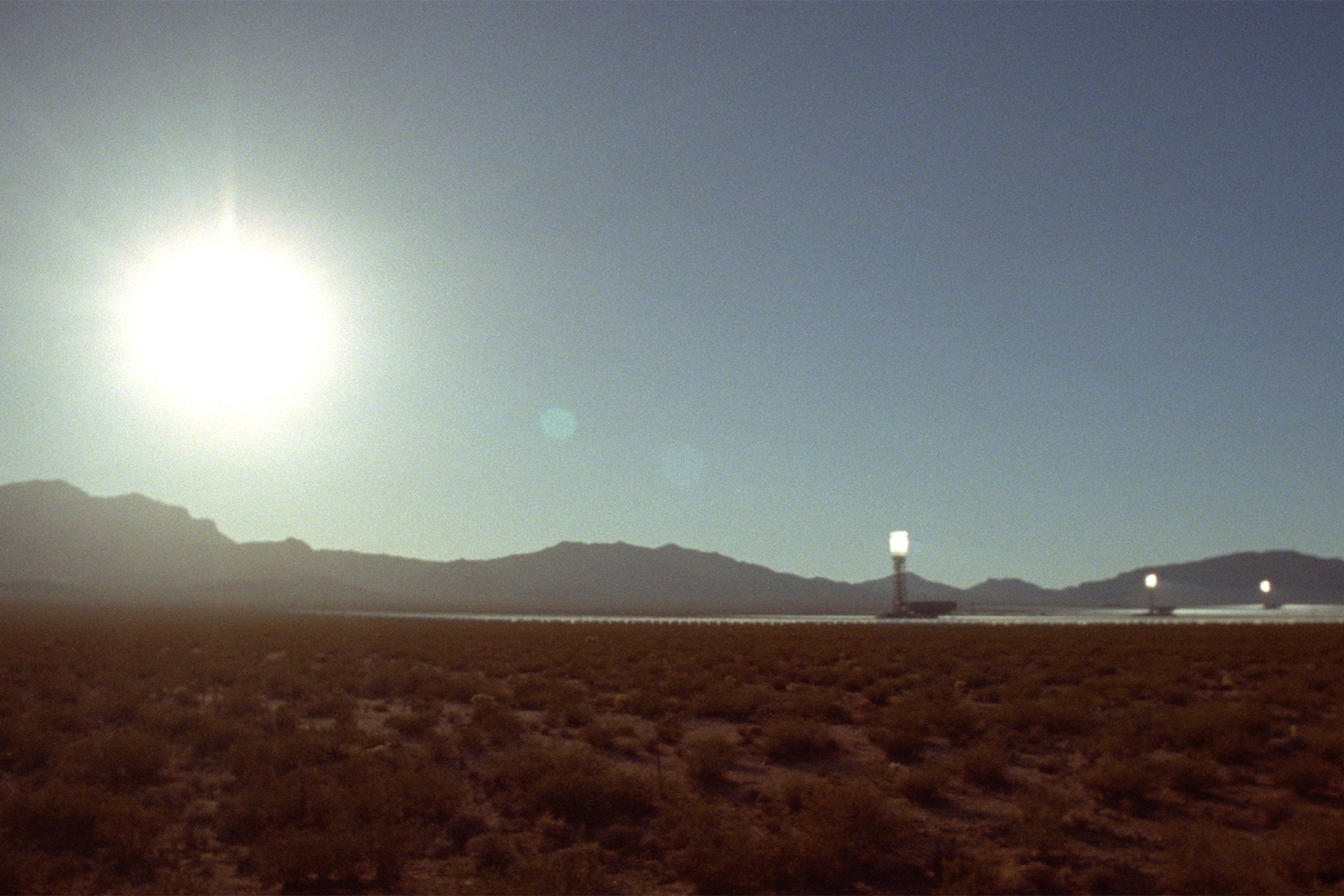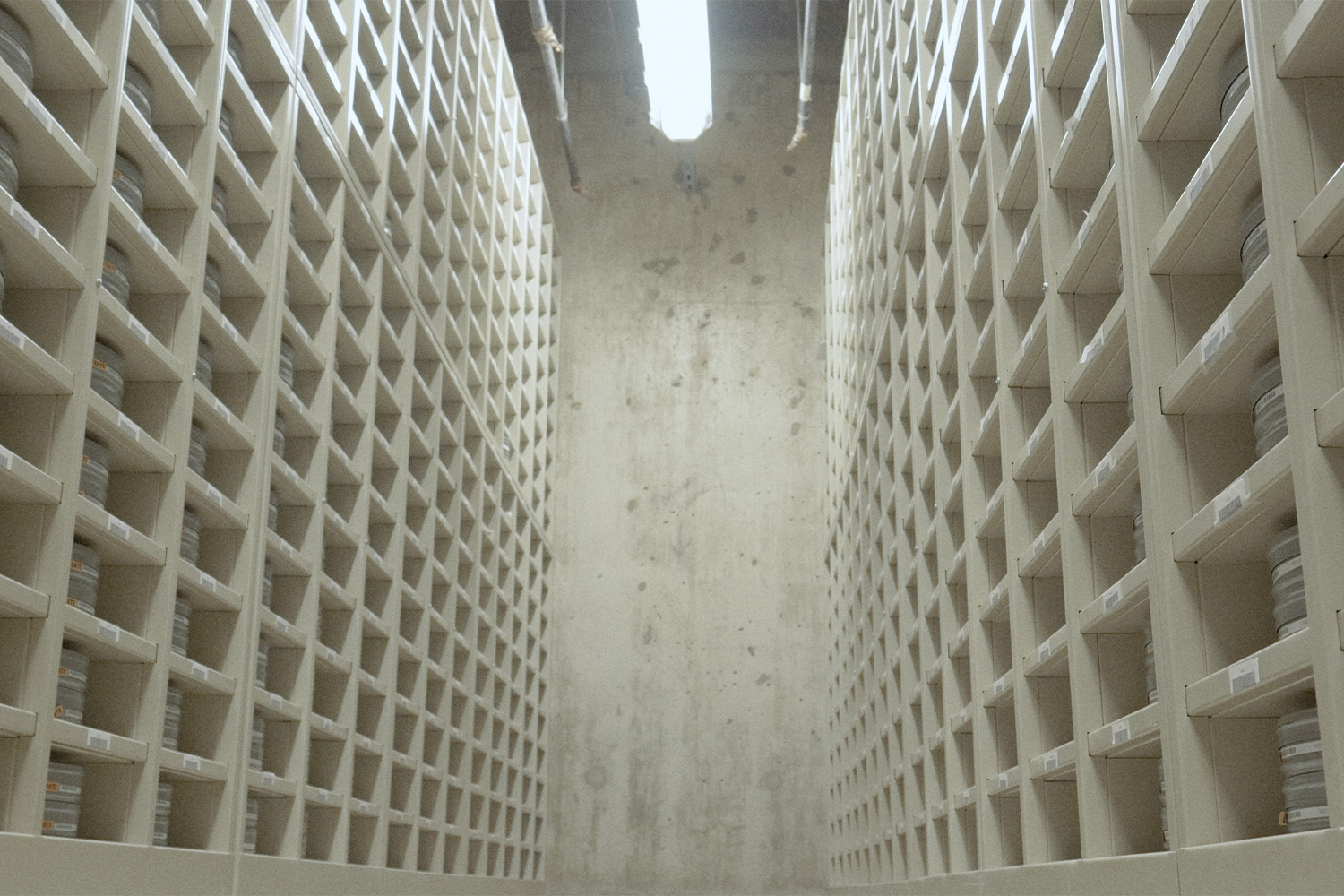Ingeborg Bachmann’s Malina opens with a clear delineation — “Time: Today; Place: Vienna” — before commencing, “But I had to think long and hard about the Time, since ‘today’ is an impossible word for me, even though I hear and say it daily, you can’t escape it.” Bachmann’s narrator continues, “In fact, ‘today’ is a word that only suicides ought to be allowed to use, it has no meaning for other people.” Rosa Barba’s exhibition is also emphatically situated in time and place from the get-go. Time (as title): “The Perpetual Now.” Place: Berlin’s Neue Nationalegalerie, Mies van der Rohe’s newly renovated, modernist icon. Questions of temporality are also paramount in the experience of the building itself, which re-opened after a six-year restoration led by British architect David Chipperfield, a process he likened to a “surgery” to extend the life of van der Rohe’s last independent work, coaxing the building, completed in 1968, into a kind of perpetual now of its own.1
A layered and almost frenetic presentation of the artist’s works from 2009 to 2021, Barba’s exhibition in the museum’s subterranean Graphikskabinet also constitutes a thoughtful reflection on the stakes of priming van der Rohe’s legacy for an everlasting present. Blind Volumes / Backstein (2021), an installation made of steel, plexiglass, screens, and platforms, takes van der Rohe’s 1924 drawing for an unrealized “Brick Country House” as a point of inspiration, accentuating the way in which his legacy is a framing device here. This work is also the physical structure of the exhibition itself: the surface upon which films or synchronized lights are beamed and projectors-cum-sculptures are placed. Barba’s sculptural approach to film facilitates a conception of time as an accumulative form. This undoing of linear progression is present in the looping motion that characterizes a number of her sculptures, like the twisted filmstrips that accumulate on the floor in Spacelength Thought (2012), which is constructed from the choreographed, continuous interaction between a typewriter, a projector, and celluloid. It is also the subject matter of many of her moving-image works, as in From Source to Poem (2016), a 35mm film with optical sound that focuses in part on the world’s largest multimedia archive in Virginia, casting the preservation of memory as overwhelmingly static. As something that, above all, takes up space.
Amid this exploration of filmic materiality, a cacophony of sound is the show’s strongest initial impression. The whir of film projectors and the recorded percussion of instruments seem to ricochet around the room, as films are activated in a sequence that guides a path through the show. The commotion is something of a relief after the bated breath and ensuing hush surrounding Alexander Calder’s kinetic sculptures standing and dangling within the steel-and-glass hall upstairs. And a subtle reminder that it is chatter and clatter that actualizes architecture. Yanks it into today. In her 16mm film fittingly titled Enigmatic Whisper (2017), Barba homes in on a white mobile that still hangs in Calder’s studio in Roxbury, Connecticut, splicing aerial shots of the work with sudden changes in scene and perspective against a trumpet and drum’s irregular rhythm. As well as the sound produced by the sculpture itself.
A sense of nostalgia seems to flit around the room as if threatening to settle in; Barba manages to hold it at bay. Its temptation lies, for one, in the allure of the analog. Antidotes to digital sleekness, the contraptions that make up Barba’s oeuvre grow increasingly inextricable from notions of aura. In another vein, the patrilineage in which Barba situates her oeuvre — Benjamin and Goethe are predominant points of reference, Calder and van der Rohe significant subjects — verges on reverence. While she critically and poetically engages these influences, adulation of these forefathers hovers close like a trap. This dynamic extends to the newly re-opened space as well, as how and to what extent the museum will open itself to shape-shifting, how tightly it will hold to the hard-earned preservation of van der Rohe’s legacy, remains to be seen. Barba’s show, as well as upcoming solo presentations with what the press release terms “politically minded feminist artists” (oh my!) Barbara Kruger and Monica Bonvicini, are proffered as evidence of an intention to become a museum for today. Bachmann’s adage seems to ring truer: “today,” and the word’s gripping boundlessness, has little meaning here.






